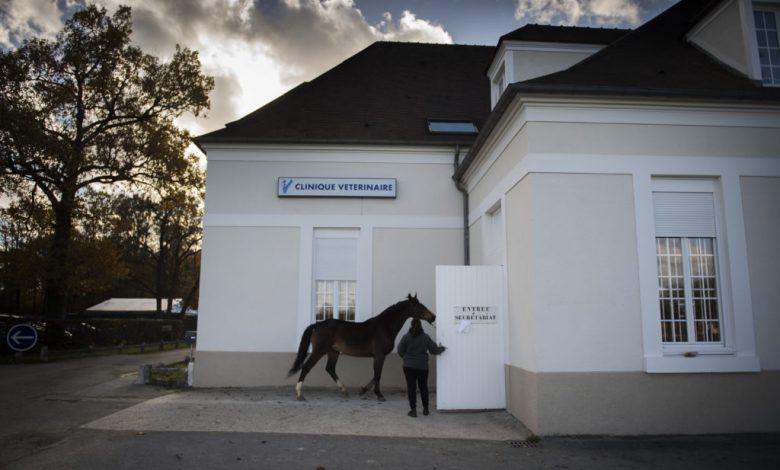
Clinique de Grosbois, a veterinary clinic outside of Paris, France, specializes in treating racehorses that have been injured in the sport of racing. Among the most common injuries they treat are neck fractures and vertebral fractures caused by falls. And while in many cases the horses can be treated using conventional techniques like compression screws, dorsal laminectomies and ventral cervical fusions, more serious injuries have in the past led to animals being euthanized.
Eager to find another solution and to save the lives of injured racehorses, Dr. Fabrice Rossignol and his team at the clinic turned to 3D printing to improve neck and vertebral fracture treatments for horses. This investigation began as early as 2017, as Dr. Rossignol, along with surgeon Dr. Martin Genton and third-year resident Ariana Campos, set out to find a partner specializing in metal additive manufacturing. 3D Medical, a leading metal AM service bureau in France, was conveniently located mere kilometers away from the veterinary clinic and so a natural partnership was formed.
“Despite my very specialized request in a very specialized sector, Vincent [Nuttens, CEO of 3D Medical] and his team did not hesitate in agreeing to support us during the experimentation phase, investing in research and then eventually onto the development of the final metal additive solution that we have today. Like me, he has bet enthusiastically on innovation and the long-term,” explained Rossignol.

“Having spoken to Fabrice and hearing about the lack of a satisfactory solutions for the injured horses, I knew that we would be able to find a way with additive,” added Nuttens. “We’ve ended up with a new type of prosthesis, that improves healing and hopefully will positively improve the outcome for as many animals as possible.”
Thanks to metal 3D printing, the veterinary clinic now employs a novel approach when treating neck and vertebral fractures. First, the racehorse is given an anesthetic and placed in a surgical hammock, which keeps the animal still. The fracture can then be stabilized using a 3D printed plate and 3D printed cancellous screws which bridge the vertebrae. If the vertebrae is injured, the surgeons can also implant a small 3D printed titanium cage in the ventral disc space. These implants are made by 3D Medical using GE Additive Mlab 3D printers.
According to the partners, the 3D printed titanium intervertebral spacer uses compression forces to maintain the spacing between the horse’s vertebrae, which prevents the disc in the medullary canal from protruding as well as the caudal vertebra from displacing. Titanium is the material of choice because it promotes natural osseointegration more than other metals, such as steel. AM, for its part, also supports this process through the integration of porous geometries in the devices.
The 3D printed metal screws are also self-tapping and partially self-drilling, which allows for the maximum amount of anchorage while also minimizing the risk of perforation. As Rossignol sums up: “The three major features and benefits of the metal 3D implant are its precision of custom printing and its resistance to a force and weight (a horse’s weight is significantly greater than a human’s), as well as the post-operative mobility of the animal.”
To date, the procedure with 3D printed devices has largely been a success, with few complications occurring. After the surgery, horses are left to recover for one month in a stall with minimal movement. From there, they can be rehabilitated first with hand walking, with a walker and in the paddock. The clinic says full recovery takes roughly five to eight months, and racehorses are cleared after a clinical and radiographic test.
Thanks to its cooperation with the veterinary clinic, 3D Medical is also assisting in the treatment of horses outside of France. According to Nuttens, his company is now selling the 3D printed medical devices for racehorses in Switzerland, Australia and the United States. Despite this foray into the animal world, 3D Medical’s main business is focused on osseointegration for humans, including the production of orthopedic plants.
ShareTweetSharePinWhatsAppBuffer Tagsfuture